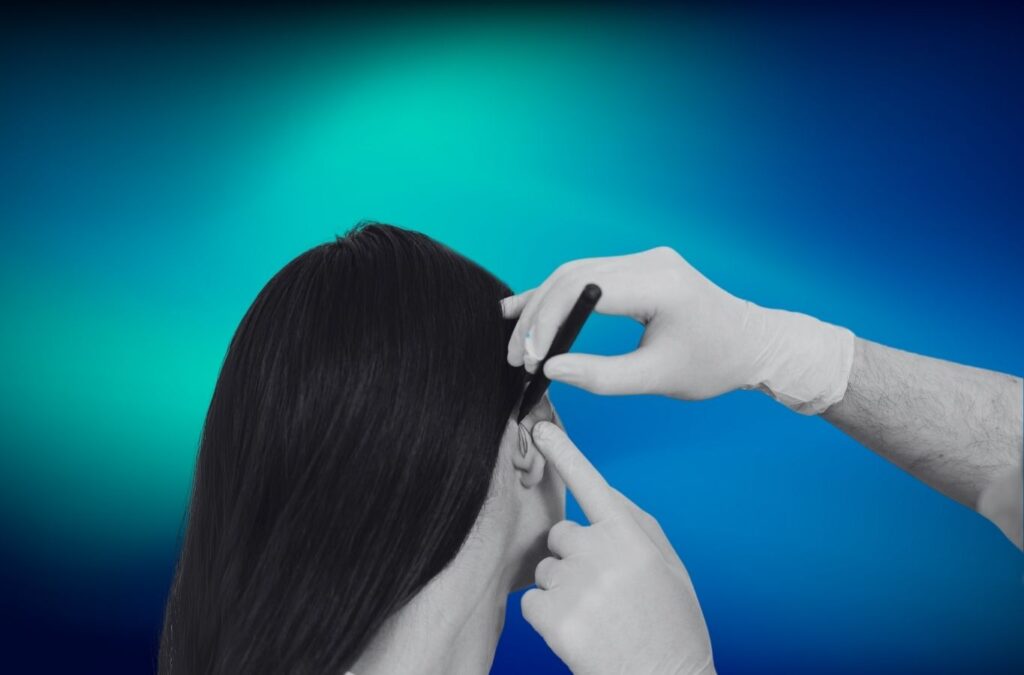
Prominent Ear Surgery What is it?
Prominent ear surgery (otoplasty) is an aesthetic operation performed to make the ears stand closer to the head and to correct deformities. It is usually performed under local anaesthesia and takes 1-2 hours. Patients recover within a few weeks after the operation. It offers permanent results and can be performed for both children and adults.
Prominent Ear Surgery Causes
Prominent ear surgery is usually performed with aesthetic concerns. Individuals with ears that are too far from the head or deformed prefer this surgery to achieve a more balanced appearance. In addition, people who have congenital prominent ear problems or deformity as a result of traumas can correct the shape of their ears with this surgery. The surgery aims to increase the self-confidence of the person and provide a more visually harmonious appearance.

Prominent Ear Surgery Who Cannot Do It?
In some cases, surgery for prominent ear surgery (otoplasty) can be avoided. Here are some people who cannot have this surgery:
People with serious health problems: People with heart disease, diabetes, bleeding disorders or a weak immune system may not be suitable candidates for the operation.
Those with bleeding disorders: It is not recommended for people with bleeding clotting problems to have otoplasty.
People who should postpone the surgery: People with health problems such as acute infections, colds, etc. may pose a risk to the healing process and surgery should be postponed.
Those in childhood age group: Generally, prominent ear surgery is performed in children around 5-6 years of age. However, it is not recommended for those under this age or for children who have not completed facial development.
Those who are psychologically unprepared: Such aesthetic procedures are not recommended for people who do not have realistic expectations about the outcome of the surgery and who are not psychologically prepared.
Before the operation, a surgeon assesses the suitability of the patient and makes a decision.
Prominent Ear Surgery Post Recovery Process
The recovery process after prominent ear surgery is usually fast, but there are some important points to be aware of:
First days There may be swelling and bruising in the ears after the operation. This decreases within a few days. There may be mild pain for the first few days, but it can usually be controlled with painkillers.
Use of bandages: After surgery, the ears are usually wrapped with a bandage. The bandage protects the ears and prevents them from deforming. It is important to use the bandage as recommended by the doctor during the first week.
Swelling and bruising: Swelling and bruising will subside within 1-2 weeks, but may take several weeks until the ears are completely healed.
Work and daily life: Most patients can return to work or school within 1 week. However, sports and bending the head too much should be avoided.
Full recovery: Full recovery usually takes 6-8 weeks. During this time, care should be taken not to damage the ears.
Long-term results: The final results of the surgery may take 3-6 months for the ears to take their final shape.
It is important to follow the doctor's recommendations during the recovery process to avoid complications and achieve the desired result.

Frequently Asked Questions
How long does prominent ear surgery take?
The operation usually takes 1-2 hours. The procedure may vary according to the deformities in the ears.
Which type of anaesthesia is used for prominent ear surgery?
The operation is usually performed under local anaesthesia, but general anaesthesia may be preferred for children.
What are the risks of prominent ear surgery?
As with any surgical procedure, there are risks in prominent ear surgery. Complications such as infection, bleeding, asymmetry or suture dehiscence may occur, although rarely.
Is prominent ear surgery permanent?
Yes, prominent ear surgery provides permanent results and the shape of the ears is corrected.











